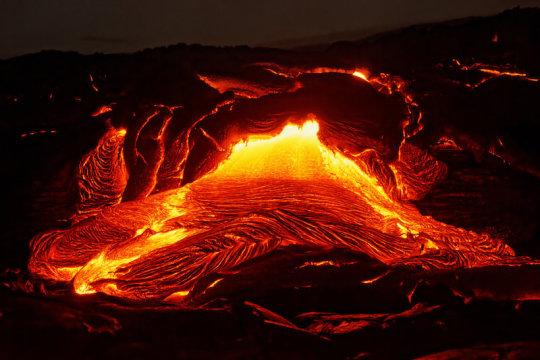Revealing Earth’s History from a Microscopic Drop of Ancient Seawater

Image for representational use only.Image Courtesy : Science Daily.
One of the unique characters of the planet Earth is its plate tectonics. The plate tectonics of Earth is so important that it directly or indirectly controls every function of the planet. Whether it is atmospheric condition, mountain building or forming continents, natural hazards like earthquakes, volcanoes, formation of mineral deposits or the maintenance of the oceans, all are linked to plate tectonics some way or the other. Plate tectonics is the process where seven large plates of the Earth undergo large-scale continuous motion and as a result, the top layers of the Earth or the crusts are recycled into the mantle and are periodically replaced by new layers through processes such as volcanic activity.
One important question for the earth scientists have been the time the plate tectonics started. Earlier, it was thought that the plate tectonics started about 2.7 billion years ago. But a latest study published in Nature on this aspect has opened up a fresh debate. What the study claims is that the process of plate tectonics started much before what has been thought, that is, it started 600 million years before the period of time that has been assumed so far. In other words, the plate tectonics started on Earth 3.3 billion years ago, according to the Nature paper. The team of scientists analysed the microscopic leftovers of a drop of water that managed to get transported into the Earth’s deep mantle through plate tectonics.
“Plate tectonics constantly recycle the planet's matter, and without it the planet would look like Mars. Our research showing that plate tectonics started 3.3 billion years ago now coincides with the period that life started on Earth. It tells us where the planet came from and how it evolved,” said Professor Allan Wilson from the Wits School of Geosciences, one of the lead scientists who conducted the study.
It is to be noted that the Earth is the only planet in the solar system that is shaped by plate tectonics. The plate tectonics play a vital role to make Earth a habitable place for lives. Earth scientists have shown in their research that rapid cooling of the Earth’s mantle through plate tectonics played a major role in developing first life forms. The cooling of the mantle led to deposition of phosphorus in the Earth’s crust—the outermost layer of Earth. The deposited phosphorus in times mixed with water on the surface of Earth and broke down into phosphates, which became available for development and nourishment of primitive life. As we know now, phosphorus is essential for life. Phosphates, that are the compounds containing phosphorus and oxygen, are part of the backbones of DNA and RNA and also of cell membranes. Phosphates also control cell growth and function.
In the research of the ancient seawater, the team of the scientists analysed komatiite—a type of a rock melt. Komatiite got its name from its occurrence in the Komati River near Barberton in Mpumalanga, a province in South Africa. The komatiites are basically the leftovers from the hottest magma that was produced in first quarter of Earth’s existence—the Archaen period of time. Magma refers to the molten or semi molten material that erupts from the beneath of the Earth. All the igneous rocks are formed from magma. Most of the komatiites have been altered by environmental and other factors. But the small droplets of the molten rock were preserved in the mineral called olivine. This allowed the scientists to analyse the preserved ancient piece of lava.
“We examined a piece of melt that was 10 microns (0.01mm) in diameter, and analysed its chemical indicators such as H2O content, chlorine and deuterium/hydrogen ratio, and found that Earth's recycling process started about 600 million years earlier than originally thought. We found that seawater was transported deep into the mantle and then re-emerged through volcanic plumes from the core-mantle boundary,” said Wilson.
The research not only gives a renewed idea about the starting of plate tectonics, but also gives insights into the first stages of plate tectonics and the beginning of continent crust.
Get the latest reports & analysis with people's perspective on Protests, movements & deep analytical videos, discussions of the current affairs in your Telegram app. Subscribe to NewsClick's Telegram channel & get Real-Time updates on stories, as they get published on our website.















